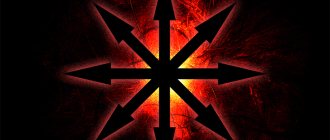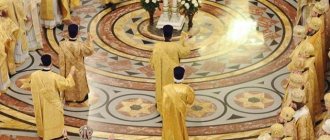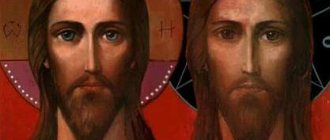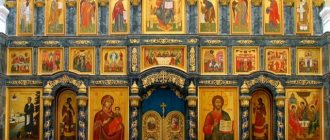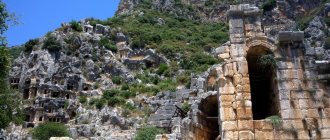| pentagram; pentalpha ≈ five-pointed (pentagonal) star ≈ pentacle < pentangulum, pentaculurn ———— A five-pointed star drawn in one fell swoop. Natural prototypes could be looked for in the five-ray symmetry of some echinoderms (for example, starfish). Sumerian and Egyptian star sign. A geometric symbol of harmony, health and mystical powers, associated with the symbolism of the number five. Being infinite, the five-pointed star perceives the meaning, power and perfection of the circle. Like the circle, the pentagram has the ability to bind evil forces and elementals, and therefore also symbolizes good luck. Its five peaks mean spirit, air, fire, water and earth. It is also a symbol of marriage, fulfillment: its five rays represent the fruitful union of the three, the masculine, and the two, the feminine. The inverted pentagram in everyday perception is a symbol of destruction, the Devil (goat's head), lust and rude instincts. Basic values:
|
Content
- 1 Basic values:
- 2 Ancient East
- 3 Egypt
- 4 Antiquity
- 5 Judaism
- 6 Gnosticism
- 7 Christianity
- 8 Alchemy
- 9 Magic
- 10 Kabbalah
- 11 Freemasonry
- 12 Heraldry
- 13 Occult
- 14 Ad notanda
- 15 Draft materials
- 16 ***
- 17 Illustrations
- 18 Notes and comments
See also:
Geometric Symbols Number 5 Star Circle
Antiquity
The pentagram is found in Etruscan pottery.
Pythagoras and his students considered the pentagram as a combination of the numbers two and three (respectively, the feminine, earthly and masculine, heavenly principles), which determined its role as a symbol of the union of heaven and earth, mystical harmony, as well as the microcosm (human body and mind). Being a sacred symbol of bodily-spiritual harmony, the pentagram also serves as a sign of the five senses, health and the goddess Hygieia. In this last case, the letters S, A, L, V, S are depicted at the tops of the pentagram.
A pentagram inscribed in a circle (invisible) means the silence of the initiate: its five ends are a symbol of the five years of silence of the student preceding initiation.
It is believed that it was thanks to the Pythagoreans that “the pentagram finally acquired occult significance.”
The meaning of the inverted pentagram
Greetings, dear readers. Do you know what a pentagram is?
Yes, that's right, this is one of the most recognizable protective occult symbols, it is a five-pointed star pointing upward. This is a straight pentagram. Or, to make it more clear, five isosceles triangles located on the sides of a regular pentagon.
A star inscribed in a circle is called a pentacle. But today we will also discuss the meaning of the inverted pentagram.
Various interpretations of the symbol
The first mention of the sign dates back to approximately 3500 BC. It is believed that this symbol arose in Mesopotamia due to the observation of the movement of Venus. At different times and by different religious classes, the sign of the pentagram was interpreted differently. For example, you can trace its following meanings (now we are talking about a straight, not inverted pentagram):
- the ancient Egyptians considered it the star of the god Anubis (this deity with the head of a jackal and the body of a man, it was believed that he escorted the dead to the afterlife and was the patron saint of all the dead);
- in ancient Babylon, the pentagram was considered a strong amulets; according to some sources, it symbolized the goddess of love and war Ishtar;
- among the Jews, the sign of a five-pointed star takes its origins from the Pentateuch of Moses (their main holy scripture);
- in Christianity, the pentagram is associated with the five wounds of Christ received during the crucifixion (on the forehead from the crown of thorns, on the hands and feet from the nails);
- representatives of the Gnostic faith view it as a symbol of intellectual omnipotence;
- in Europe in the Middle Ages, this sign was called the “seal of King Solomon” (there is an opinion that both the hexagram (six-pointed star) and the pentagram bore this name), according to legends it helped to gain dominance over spirits (genies) and the ability to talk with animals;
- on the seals of the Macedonian king Alexander there was a sign of a five-pointed star;
- according to the religious and philosophical teaching preached by Pythagoras in Ancient Greece (Pythagoreanism), the sign of a five-pointed star was used as a symbol of belonging to a community. Pythagoras considered this symbol to be a mathematical perfection, thanks to its ideal proportions, the golden or divine ratio. Pyramids were built according to these proportions in ancient Egypt. The Pythagoreans believed that this sign symbolizes the five elements that make up everything around (spirit (idea, ether) - upper corner, fire - lower left, water - upper right, air - upper left, earth - lower right);
- in the 16th century, by inscribing human figures into a star, the so-called microcosm was obtained, and Cornellius Agrippa illuminated this; such a sign is also called the pentacle of Agrippa or the pentagram of Agrippa. A talisman with his image can protect against damage, the evil eye and other unclean energies.
- Since the 19th century, tarot cards have featured the element of a five-pointed star;
The general thing is that this sign is characterized by special protective properties. Do you remember how Mephistopheles managed to get into Faust’s house? The scientist did not complete the pentagram (designed to protect against evil spirits), leaving a small gap in the corner.
Sign of the Devil or Strongest Defense?
With the straight pentagram everything has now become clear. What does the inverted sign symbolize? We are all accustomed to the fact that the antipode always carries opposite qualities. Day and night, sun and moon, light and darkness, God and devil...the pentagram is straight and inverted. Let's try to figure it out. To do this, let us again turn to history.
With the “light” hand of the French occultist Alphonse-Louis Constant (known under the literary pseudonym Eliphas Levi), the inverted pentagram became a symbol of Satanism. Levi, in his work “The Doctrine and Ritual of High Magic,” argued that a star with one end up is the sign of the Savior, and with two ends up is the sign of Satan (or the devilish goat Baphomet at the Sabbath). The upper ends of the star are the horns, the sides are the ears, and the lower end is the muzzle of the goat. However, on the forehead of Levi's depiction of the goat Baphomet (with the body of a woman) there is an upright pentagram, while on his hands are written words translated from Latin as “disintegrate” and “freeze.” Where is the logic? Unclear.
The founder of the Church of Satan organization, Anton Szandor LaVey, has registered a trademark in the form of the “seal of Baphomet.” It is believed that Eliphas Levi, with his statement that the sign of the inverted pentagram belongs to Satanism, created a kind of trap for the uninitiated. As we see, in our time, Satanists have absolutely “taken possession” of the symbol of the inverted pentagram. However, this is not its original purpose. This symbol is widely used by various sorcerers and occultists. It signifies physical and mental omnipotence and is capable of repeatedly enhancing the energy-information flow. Symbolizes the power of matter over spirit, the triumph of the magician over the elements, and his power.
This symbol is widely used in horror films and in modern mystical and magical books, attributing to it the negation of the Holy Trinity (three corners pointing down).
In magic there are even special ways of drawing an inverted pentagram. Those who are familiar with them are able, by drawing it in a certain way on a photograph of a person, to strengthen or, on the contrary, weaken his power. This concerns the diabolical interpretations of the inverted pentagram symbol. However, not everything is so mundane and unambiguous, friends, because anything can be turned upside down, but will there be truth in it?
The Pythagoreans associated this symbol with the chaos from which everything arose, with the darkness that hid in five different corners, this darkness was the source of wisdom. It was the inverted image that was the first. In early Christianity, an inverted five-pointed star symbolized the Star of Bethlehem. And the explanation for this is simple: when the Magi walked into the light of the star, it showed them with a ray directed downwards where the birthplace of Jesus was located. Gradually, this symbol began to characterize the transfiguration of Christ, as well as his descent into the world (indicating his coming with its ray). Thus, the symbol of an inverted star has been and is widely used in Christianity, although recently less and less due to the widespread misconception about its involvement in Satanism and the occult.
Constantine the Great, the Roman emperor who elevated Christianity to the rank of state religion, had the symbol of an inverted pentagram on his seal.
In the works of Andrei Rublev, in particular on the icon of the Transfiguration of the Lord, Christ is depicted against the background of an inverted pentagram. Such signs can be seen on stained glass drawings and frescoes in some Catholic and Christian cathedrals and churches.
Currently, the highest military award in the United States (the Medal of Honor) is an inverted five-pointed star.
If the upright pentagram is a symbol of the elevation of the spirit over matter, then in the inverted pentagram the spirit descends from above as grace. Aleister Crowley adhered to a similar interpretation; he believed that this is a symbol of the rays of the sun, which, falling on the earth, spiritualize matter.
If there is a need to communicate with evil spirits (entities carrying negative energy), or to resist them, but so that they cannot harm you, you should use the symbol of an inverted pentagram. With its help, black magicians subjugate the forces of evil, and this symbol is able to protect everyone else from these same forces.
Magicians and sorcerers charge amulets with images of both the forward and reverse pentagrams in a special way. Of course, if you believe in it and if there is such an opportunity, then it can be done. But for us, ordinary people, to use the protective means of such a talisman, we only need to use our imagination. The five-pointed star is a very multifaceted sign, so it is able to bring to its owner what the owner himself puts into the concept of this symbol.
The use of the pentagram comes down not only to wearing protective amulets, but also to meditative practices, to imaginary and real outlines of figures in certain ways.
You have the right to form your own opinion about the meaning of the pentagram inverted.
Don't forget to share useful information with your friends, good luck and prosperity.
Gnosticism
Among the Gnostics and Manichaeans, the pentagram is the central symbolic sign, serving as a graphic representation of the sacred number five, corresponding to the number of elements recognized by these groups of believers - light, air, wind, fire, water. It is not surprising that on the “Abraxas” amulets of late antiquity the five-pointed star appears as often as in the later magical literature of the West. The widespread use of the pentagram is typical both for newer sects (the same Balkan Bogomils) and for the teaching and practice of alchemy. Perhaps this “veneration” reveals the secret “lower current” of religious and philosophical thought of the Gnostic persuasion, opposing official church doctrine.
The pentagram is often depicted on tombstones, both in its usual and hidden form - like a five-fingered hand.
Magic
The pentagram is one of the most frequently and variably used magical symbols. Usually, it serves as a protective sign (against demons), so its images are often found on buildings (carved on thresholds, doors and door beams), talismans and amulets (rings), trees, rocks, etc. For example, in the Alpine region there are a large number of pentagrams carved into rocks during the late medieval and early modern periods, the images of which are combined with Christian symbols and symbols of the genitals, also perceived as amulets.
In magical practice, the pentagram is considered as a means of gaining power over the earthly and otherworldly worlds; its images often serve as the basis for various spell symbols and means in magical rituals. (For example, special powers are attributed to the pentacles depicted on parchment made from the skin of a young bull).
Under various names (Star of Microcosm, ~ magicians, pentacle of Will), the drawing of Agrippa of Nettesheim is widely known, representing a conscious person, whose figure with outstretched limbs is inscribed in a five-pointed star. This image is considered as an image of an integral personality (Man-Microcosm), whose spirit and will dominates the materiality of the four elements and one’s own passions (limbs) [1]. In his desire to embrace the whole world (quadrangle) and, thanks to the knowledge of the laws governing it, such a person strives to go beyond its limits (upper ray) to a new happy existence. At the same time, how such an adept uses the means of spell and mastery available to him (for evil or for good for the world around him) depends only on his Will.
The inverted pentagram represents the figure of a man turned head down - a symbol of a will conquered by passions or a passive person who allows evil spirits to subjugate his will.
Quite later, the “division” of magic into light and black helped to assign a negative meaning to the overturned pentagram as a symbol of evil, Satan, the perversion of the true nature of man, witchcraft, necromancy and Satanism. In this capacity, it is usually called the “witch’s foot”[2], “goat’s hoof”, etc. and is often depicted with a goat's head inscribed in it. Such semantic divergence (in particular, the change from a positive meaning to a negative one when a sign is reversed) is characteristic of any tradition with a sharp (ethical) opposition between good and evil.
When drawing a magical pentagram, it is important that it is drawn in one continuous movement and is closed, as is represented in one of the scenes of Goethe's Faust, in which Mephistopheles cannot leave the doctor's house until a mouse gnaws through one of the lines of the pentacle he drew. The importance of the sequence of drawing a sign is often emphasized: thus, the “white magic” method of drawing requires starting from the left prong, then drawing a line to the right, from there to the left, down, etc., until the figure is completed at the starting point.
Magicians are sometimes depicted wearing headdresses shaped like a pentagram - a means of calling upon supernatural forces for help.
What does a star mean in Orthodoxy?
For the Jews, the star means the Pentateuch given by the Lord to Moses. These are books in which the basic laws are concentrated and the very rhythm of Jewish life is determined: Genesis, Exodus, Leviticus, Numbers, Deuteronomy. They contain the essence of the Old Testament faith.
The pentagram is used in the interior of the Cathedral of the Nativity in Bethlehem
But the pentagram embodies all the main tenets of Christianity, and is also their visible designation:
- the star has five rays, the main ray is directed upward, the five rays of the pentagram indicate the full implementation of the basic tenets of Christianity;
- two rays mean that Jesus Christ is God and man at the same time unmerged, inseparable, unmerged;
- three rays are a designation of the Holy Trinity, one of the main doctrines of the Christian Church, on which all doctrine rests.
Interesting fact!
The pentagram has been known to mankind for more than 3000 years. This symbol is found in different cultures and religions. And the use of the star as a Christian symbol is due, among other things, to the fact that it is similar to the cross on which the Lord Jesus Christ was crucified. The five-pointed star is also associated with the Nativity of Christ. After all, it was she who was seen by the Magi and she brought them to the infant Christ. Therefore, the five-pointed star in Orthodoxy also has the meaning of the Star of Bethlehem.
Read about the stars:
- What does a six-pointed star mean?
- Eight pointed star
The pentagram is associated with the Transfiguration of the Lord. The gospel event when Jesus Christ on Mount Tabor was transformed in front of his disciples, so that a dazzling radiance of Divine light emanated from him.
Icon of the Transfiguration of the Lord with the image of a pentogram
In iconography, this moment is reflected in the icon of the Transfiguration of the Lord, which was painted by St. Andrey Rublev. There, Christ is depicted against the background of a five-pointed star, and it is a symbol of that very Divine light and at the same time is a visible expression of the main Orthodox dogmas: about the Holy Trinity and the God-manhood of Jesus Christ.
Important! For Catholics, the five ends of the pentagram also symbolize the five wounds of Jesus Christ: two on the hands, two on the legs and one from a spear under the rib. This is a sign of the suffering of the God-man for people. In Orthodoxy, this interpretation of the star is less common, but also has its adherents.
Freemasonry
The “flaming (flaming) star” as a symbol of Masonic initiation has been known since 1735. This sign is received by a Mason who has reached the degree of Apprentice. It symbolizes a person who has reached Illumination (quintessence, release of the essence of the Self) as a result of painstaking work on oneself, as well as a thought free (purified) from all prejudices and superstitions.
Typically, such a star bears the image of the letter “G” at its center, and flames or beams of rays emanate from its corners. This radiance “reminds us of the sun, which illuminates the earth with its rays and allows its blessings to become the property of the human race, giving light and life to everyone on earth.”[3]
The literature is interpreted in various ways, referring to the concepts of knowledge and teaching - Greek
.
gnosis; geometry, God - German
.
Gott; glory - fr
.
la gloire; etc. “The pentagram, which in the Gnostic schools is called the fiery star, is a sign of omnipotence and spiritual self-control... The letter G, which the free masons inscribe in the center of the fiery star, recalls two sacred words of the ancient Kabbalah: “gnosis” and “generatio”. The pentagram also means “great architect” - because no matter from which side we look at it, we see a large letter A. Eliphas Levi
Ancient world
In ancient Mesopotamia (Sumer, Akkad, Babylon, Assyria), this symbol was used in cuneiform for the word ub (“ub”), which had three meanings:
- secluded place, nook, nook
- small room, hole, cavity
- trap
The cuneiform style and corresponding drawings looked like this:
Sumer. Around 3500 BC Uruk (Sumer)
Tablet of Uruk (Sumer) Planet Venus, goddess Inanna, goddess Ishtar. Sumer, Akkad. Around 3000 BC Babylon. 900 g
The original cuneiform five-pointed star was simplified to four lozenge wedges and one vertical wedge at the bottom of the diamond:
Later in the Assyrian period, this writing was simplified even further - to four wedges of a regular rhombus:
At the same time, the image of an eight-pointed or five-pointed star in Mesopotamia was a symbol of the planet Venus (“morning star”), which in turn personified the Mesopotamian goddesses Ishtar and Inanna, who were images of the Great Mother, universal for all ancient religions.
Eight-pointed star Ishtar
Five-pointed star of Ishtar
If we compare the Sumerian word ub (“ub”) and its meanings with Venus and the Great Mother, it becomes clear that in the form of a pentagram we see an ancient vulvar symbol that personifies the womb (striking similarity between the Sumerian “ ub ” and our “ utomb ” ) a” - but perhaps a coincidence) of the Great Mother, the material chthonic (related to the earth and its depths) feminine principle, in conjunction with which the immaterial male principle of God the Creator (which in different cultures at different times has different names) creates the world .
Passage in Ignatievskaya Cave
Drawing of the Neolithic sanctuary of Ignatievskaya Cave
Megalithic sanctuary in Malta without a roof
Dolmen from the inside
In Egypt, the Mesopotamian goddess Ishtar (Inanna) corresponds to the goddess Isis. The star of Isis was Sirius (Sopdet), which itself among the Egyptians was the eponymous goddess Sopdet, “the lady of the stars.” The symbol of the star of Isis Sirius (Sopdet) was a five-pointed star, which was denoted by the hieroglyphic sign seba (star), which denoted stars in general. The sign consisted of a small circle in the center and five rays diverging from it.
It is noteworthy that the word seba, which was represented by the hieroglyph of a five-pointed star, meant “knowledge” and was associated with doorways and gates. The ancient texts say that when a man “knows” a woman, he “enters her.” In other words, in the Egyptian symbol seba we see the same vulvar symbolism that the Sumerian word ub had.
This suggests that the symbol of a five-pointed star (a closed contour with five rays), the Sumerian word ub and the Egyptian seba, are either a forgotten (or hidden) echo of the designation of the most ancient pre-literate image of the Great Mother, or this is the meaning that the Mesopotamian and Egyptian priests had in mind , but we were not able to clearly adopt it from them as a result of historical vicissitudes.
At the same time, perhaps the five rays are not the fundamental elemental element, since the star Ishtar was also depicted with eight rays. Apparently, the central area (a place in the form of a circle or square, rhombus, pentagon-pentagon) from which the rays diverge is fundamental.
Everything that was stated above in the form of an assumption is confirmed in Ancient Greece, which was closely connected with Egypt and Mesopotamia by trade and “cultural” ties. If we don’t know the names of the figures of Mesopotamia or Egypt who operated the symbol we are considering, then proud individualistic Ancient Greece has already left us a history of specific historical characters who are associated with the five-pointed star.
In the 6th century BC, on the Greek island of Syros in the Aegean Sea, there lived the sage Pherecydes, who taught that to create the cosmos, the seed of the primordial god Chronos was placed in a place on the Earth called the "five corners" or Penthemicos (pentogram). The cosmogonic work of Pherekydes was called “Pentemikos”. The earth is the most important symbol of the Great Mother, so the pentamicos of Pherekys actually has the same vulvar meaning as the Mesopotamian ub and the Egyptian seba. Ancient authors testify that Pherecydes studied from the secret books of the Phoenicians and the Egyptians. The Phoenicians are people from Palestine, which borders Mesopotamia. The Phoenician religion was closely connected with Mesopotamian cults.
Pherecydes was an eccentric and lived in caves . One Greek author said about him this way:
Pherecydes of Syros talks about nooks and pits and caves and doors and gates , and with the help of similar riddles he talks about the formation and death of souls
For us, the riddles of Pherecydes are not riddles; we know the meaning of the words ub and seba.
Pherecydes was a significant figure and is sometimes ranked among the "seven wise men". He was also the teacher of Pythagoras. The pentagram was the symbol of the Pythagorean secret society. The Pythagoreans also called the pentagram “hygia,” that is, “health” (ὑγιεία, hugieia). It is noteworthy that the goddess of health Hygia (wife of Asclepius) was depicted as a young woman who feeds a snake from a bowl that is shaped like a circle. The snake (snake, dragon), along with the earth, is the most important symbol of all goddesses who personify the feminine principle of the Great Mother. In the case of Hygia, the snake perhaps also carries phallic symbolism, paired with the vulvar symbolism of the round bowl.
Thus we see that in ancient Mesopotamia, Egypt and Greece for at least 3000 years from the Sumerian scribes (mid-4th millennium BC) to Pherecydes and Pythagoras (6th century BC) the pentagram was symbol of the feminine principle - the Great Mother.
Judaism, and then Christianity and Islam, did a lot to suppress the ancient cults of the Great Mother, which then degenerated into bloody orgies, which in fact were ancient blasphemy in relation to the originally bright and pure images of the immaterial Father-Creator and the material Great Mother and their sacred union. The Father-Creator was almost forgotten, and the Great Mother and everything connected with her were distorted and exaggerated. An important goal of monotheism was to restore the emphasis on the Father-Creator, the male origin.
Draft materials
- is considered the imprint of the devil’s hoof, the foot of a goblin, a brownie...
- “Leg” apparently means the support of the witchcraft science of witches...
- Drawing pentagrams can also be regarded as a purely playful pursuit of graphic skill...
- Pentacle, pentacle - an expression to designate various spell signs of ritual magic.
- When used in magical rituals, the five-pointed star is usually called a "pentacle".
- The proportions of this symbol are based on the sacred proportion called the "Golden Section", which is a point on any drawn line which so divides that line that the smaller part is in the same proportion to the larger part as the larger part is to the whole.
This can be seen in the diagram. Line AC is divided at point B in such a way that: BC/AB = AB/AC = CD/AC = AC/AD
- This "Golden Section", or "Divine Proportion", as it is sometimes called, appears in every single line of the pentagram and helps to explain the adoration with which magicians looked upon this symbol.
- For example, we see it on a detail of the tombstone of an ex-Mason in the churchyard at Littleborough, in a drawing made for a secret society called the Order of the Rose and Cross, on one of the magic tablets used by the occultist John Dee to summon angels, in a crude drawing used black magicians to conjure demons, and on one of the talisman seals recorded by Agrippa. It is interesting to note that the pentagrams in the last two images are inverted so that one apex of the symbol is pointing downwards.
- mystery, magic
The simplest star shape that can be drawn without breaking with one line. Hence one of its names - “Endless Knot”.
Other names:
- Goblin's Cross
- pentalpha - (Pentalpha)
- Witch's Foot
- Devil's Star
- Seal of Solomon, along with the hexagram - (Seal of Solomon)
For a long time it has been considered as a powerful amulet and protection from demons and all evil. Hence the symbolism of safety and popularity as an amulet, for example, for a happy return home.
Evidence of the use of the sign as a talisman over the doors and windows of buildings is the folk song “Green Grow the Rushes, O!”[5], one of the lines of which reads:
Five is the symbol at your door. Five is the symbol on your door.
A sign with a centuries-old history, varied usage practices and deep layers of meaning, many of which, however, took shape relatively recently.
Currently, it is a ubiquitous symbol of neo-paganism, closely associated with magic.
- The oldest examples of use date back to c. 3500 BC e. (Uruk period). In the city of Ur (Old Mesopotamia), clay tablets with the oldest known written signs were discovered, among which is a pentagram.
- In later periods, the pentagram is found in the art of Mesopotamia among the "royal inscriptions", where it symbolizes the supreme power, "extending / extending to the four directions / ends of the world."
- Among Jews it is a symbol of Truth and the Pentateuch. Sometimes mixed with the Seal of Solomon. Used in parallel with the hexagram (?).
- In Ancient Greece it is considered as a combination of the five letters alpha.
- The geometry and metaphysical associations of the pentagram were explored by the Pythagoreans (586-506 AD), for whom it served as a symbol of perfection. Many researchers, based on information about the travels of Pythagoras, explain the importance of the pentagram for Pythagoreanism with its symbolic meaning in Egypt, Chaldea, and even in the Tantic art of India. It was perceived by post-Hellenistic art as the embodiment of the golden ratio and is found in the design of a number of cathedrals.
- The “flaming star” of the Gnostics, which, together with the crescent moon, refers to the magic and secrets of the night sky.
- Among the Druids it is a symbol of the head of a god. The Celts are associated with the underground goddess Morrigan.
- In Ancient Egypt - a symbol of the “underground womb”, related in concept to the shape of a pyramid.
- In early Christianity - the five wounds of Christ; a meaning that lasted until the Middle Ages. Since the Inquisition, previously unnoticed associations of the pentagram with the devil and demonic forces have appeared. More often than not, this geometric "endless knot" figure is associated with Truth, religious mysticism and the work of the Creator. Protection from demons both as a personal amulet and as a talisman protecting windows and doors.
- The pentagram is present on one side of the seal (and/or amulet) of Emperor Constantine; on the other - the Constantine cross is depicted (Chi-Rho monogram, Christogram).
- The Feast of the Adoration of the Magi has a pentagram as its symbol as a sign of the truth that the Messiah brings to non-Jews. In later times, the pentagram in this context was replaced by a five-pointed star - a reaction to the active use of the pentagram by neo-pagans.
- When upright, it symbolizes summer; when upside down, it symbolizes winter.
- The center of the Knights Templar (Rennes du Chatres, France) is surrounded by mountain peaks several miles apart, forming an almost regular pentagon. This circumstance gave rise to a huge number of symbolic/geomantic calculations relating to both the pentagram and the hexagram. In the monuments preserved from the Order, traces of the use of the pentagram as a symbol/matrix of the golden ratio are found.
- The demonologists of the Inquisition used the pentagram as a means of combating heresies, exhibiting the overturned pentagram as a symbol of the Devil (in the form of Baphomet), which is a goat's head. The prevalence of the pentagram in architectural and other decorations made it possible to accuse almost anyone of devil worship, which was done in relation to the Templars.
- During the period of witch hunts, a popular protective and magical symbol begins to be identified with pagan horned gods and the devil. During this period, the sign is perceived predominantly negatively, being associated with witchcraft and the forces of evil and receiving the name “witch’s foot.”
Where is it found?
But, some people also claim that this symbol represents evil spirits, but despite this, the five-pointed star in Orthodoxy was used to decorate temples, but also sacred miraculous images. Here are some of the most famous examples:
- there is a five-pointed pentagram in Bethlehem above the Cathedral of the Nativity;
- in the Bethlehem Cathedral of the Nativity there is also a floor shrine (kiot) for a miraculous image in the symbolism of which a red star with five rays is used;
- on the maforia of the Mother of God three pentagrams are depicted, two of which are located on the shoulders, and the third on the forehead, which in turn is a traditional detail in the Mother of God iconography, personifying the virginity of the Virgin Mary both before, during and after the Nativity of Christ;
- on the copy of the image “Transfiguration of the Lord”, written by Andrei Rublev, there is also this visible symbol, which represents the transformation of the Almighty and his descent into the world, which is why the location of the pentagram is facing downward;
- Another striking example of the use of the symbol is the Cathedral of the Savior on Spilled Blood located in St. Petersburg, where similar images are found in abundance.
It should be noted that the association of the Most High with this symbol was also in some cases justified by quotations from the Holy Scriptures, for example: “I, Jesus, have sent My angel to testify to you this in the temple of God. I am the descendant and root of David, the morning and bright star.”
The Lord is always with you!
The best article for you, go to: Who is an archpriest in the Orthodox Church
***
The concept of microcosm - the human world as an analogue of the macrocosm (as above, so below) becomes part of the Western occult tradition. The pentagram as the “Star of the microcosm” represents a human figure inscribed in the pentagram.
The figure itself bears resemblance to a pentagram. Tycho Braek in his Calendarium Naturale Magicum Perpetuum (1582) gives a pentagram with an inscribed human body and the Hebrew letters YHSVH associated with the elements. Illustrations for the work of Brahe's contemporary Agrippa of Nettsheim have similar proportions and include five planetary symbols and the sign of the moon at its central point, coinciding with the genitals. Other images from this period by Robert Fludd and Leonardo da Vinci also show the geometric relationship between man and the Universe.
Later, the pentagram symbolically correlates with the head and four limbs and, accordingly, the ether (pure concentrated essence of anything) (or spirit) with the four traditional elements (earth, water, air, fire) - the spirit of The Quintessence.
In Freemasonry, Man as Microprosopus was and is associated with the five-pointed Pentalpha. The symbol was used, interlaced and upright for the sitting Master of the Lodge. The geometric properties and structure of the Endless Knot were appreciated and symbolically incorporated into the 72 degree angle of the compasses, the Masonic emblem of virtue and duty. The origins of freemasonry are lost in the depths of history, obscured by the traditional Craft secrecy of the order, but there are signs throughout the history of the associations of craftsmanship and ritual and symbolism that have remained known only to a few, and the history of the pentagram has remained occluded in the same kind of mystery. The women's branch of freemasonry uses the five pointed Eastern Star with two points up as its emblem. Each point commemorates a heroine of biblical lore.
No known graphical illustration associating the pentagram with evil appears until the nineteenth century. Eliphaz Levi Zahed (actually the pen name of Alphonse Louis Constant, a defrocked French Catholic Abbey) illustrates the upright pentagram of microcosmic man besides an inverted pentagram with the goat's head of Baphomet. It is this illustration and juxtaposition that has led to the concept of different orientations of the pentagram being good and evil.
In the period from 1888 to 1814. Golden Dawn has done much to promote and disseminate modern Hermetic Qabalah among adherents of the various schools of cabalistic philosophy and magic.
In 1940, Gerald Gardner adopted the inverted pentagram as a symbol of the second steps/degrees of initiation in the ritual of the emerging neo-pagan witchcraft cult, later formalized as Wicca. The symbols of the first and third degrees of initiation in this system are a triangle with its apex down and a combination and combination of a pentagram and a triangle formed upward, respectively.
By the beginning of the 1960s, the pentagram again acquired the meaning of an amulet due to the growing interest in witchcraft and pagan cults, etc. to Wicca (Witchcraft and Wicca), accompanied by many publications.
The inverted pentagram is actively used by many Satanic cults following the Church of Satan founded by Anton LaVay. As the emblem of the latter cult, the overturned pentagram was taken from the image of Baphomet, introduced into symbolic circulation by Eliphas Levi. As a result, the attitude of the Christian Church towards the pentagram is purely negative, similar to that of the swastika in post-war Europe.
The discrepancy in the perception of straight and inverted pentagrams led to their opposition as symbols of white and black magic, or the ethical principles of Wiccanism (the Wiccan Rede of “An it harm none, do what you will” - do no harm and do what you want) and Satanism ( dominance of the material and physiological over the spirit).
Although the inverted pentagram is a symbol of Gardnerian initiation, many Wiccans, especially in the United States, refrain from using this symbol due to the strong negative reaction to it from fundamentalist Christians. The use of even a straight pentagram often leads to social discrimination against modern pagans by society.
An established symbol of neo-paganism and Wicca, endowed with diverse mystical meanings and traced (very arbitrarily) to ancient folklore tradition. Its popularity as a symbol of neo-paganism, comparable to that of the cross as a Christian symbol, is rooted in the widespread use of the symbol rather than in its antiquity.
Middle Ages and Modern Times
However, with the weakening of monotheism in the late Middle Ages and early modern times, the ancient rites of the Great Mother began to return. The European neo-paganism of the Renaissance, embittered against Christianity, in a world that had already begun to globalize, lumped together all the ancient gods and goddesses and created a lot of new things to boot. Thus, the most odious movements of the occult Masonic and near-Masonic anti-Christian secret societies created Satanism. The pentagram was chosen as the symbol of this destructive trend, despite the fact that before that it was used among quite positive monotheistic (Jewish, Christian and Islamic) symbols.
From the point of view of fighters against monotheism, the choice of this symbolism is quite logical. In order to “overthrow” the male spiritual principle of the monotheistic Father-Creator, it is necessary to place emphasis on the pagan female material principle of the Great Mother-Matter (when united with which the Father-Creator created the world). Moreover, the Great Mother has a “grievance” against the Father-Creator for oblivion during the period of the triumph of monotheism.
Therefore, the cults of Astarte and Baal were revived with an emphasis on Astarte. Therefore, Kabbalists wove Lilith (Mesopotamian Belit) into Adam and Eve. Hence the Masonic Isis with the veil. materialism (there is nothing except Mother Matter) and atheism (denial of God the Father) appeared Therefore, feminism, obsessive sexualization and the modern cult of sexual perversion appeared. Thus, the ancient blasphemous orgiastic rites of the Great Mother, which included female and male prostitution in temples (cultures) and Sodom orgies, returned in a veiled manner to popular culture. Therefore, the struggle for ecology and climate appeared and, as their extreme form, eco-fascism as the desire to destroy people in order to restore the purity of the Earth.
